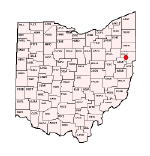
northeastern Ohio | Robert,
There are two methods for estimating rhizobia counts in the soil.
1) The first is refered to as the "most probable number" technique or MPN. This is done in the lab and takes about 6 weeks. Soil samples are rinsed and the solution is then poured onto sterile soybean seedlings. After six weeks, the nodules on the soybean plants are counted and this gives an estimate of the rhizobia population in that soil. Labs can look under a microscope and count the TOTAL number of rhizobia that are in the soil sample, BUT the above method has been the only way to estimate the actual number of rhizobia which are specific to soybeans.
2) The second method is a DNA test, other wise known as a qPCR (quantitative polymerase chain reaction). I believe that the University of Wisconsin-Madison developed this test in 2009. Here is an article about it that explains it better than I can: https://www.certifiedcropadviser.org/story/2011/jan/tue/new-method-to-measure-soybean-rhizobia
The researchers at UWMadison hope to make a pre-plant rhizobia test that would help determine how effective/economical innoculation would be. Until this test is commercially available, we need to look at the data we have available and make an informed decision on whether to innoculate or not. We know that many regions of the USA had severe drought and heat last year. We know that rhizobia live in the top few inches of the soil. We know that they do not survive in hot dry dirt. If your farm experienced the drought last year, then I think you will see a response to innoculation this year.
Edited by Jay NE Ohio 3/11/2013 12:03
|


 Ed Winkle, Rhizobia cell counts
Ed Winkle, Rhizobia cell counts